Incredible Hulk: Exploring the Kingsbridge Armory With a Crew of NY’s Most Intrepid Engineers
Attempts to redevelop the Bronx’s Kingsbridge Armory, one of the largest buildings of its kind in the world, date back decades. Will the city’s latest attempt succeed?
By Abigail Nehring November 2, 2023 6:00 am
reprints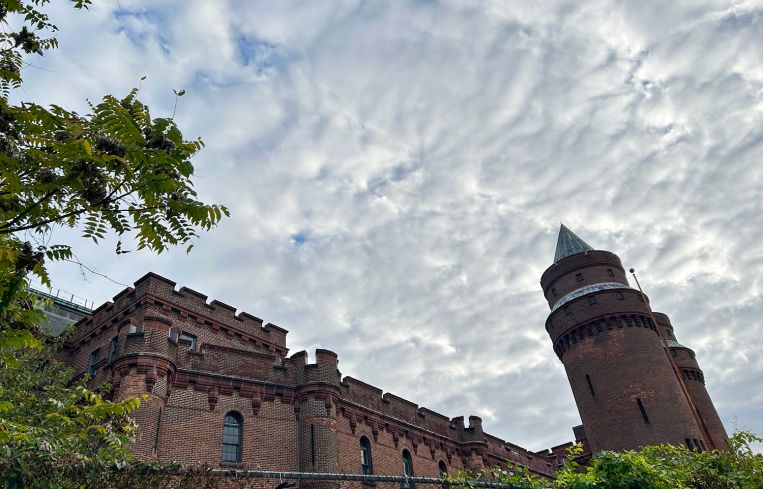
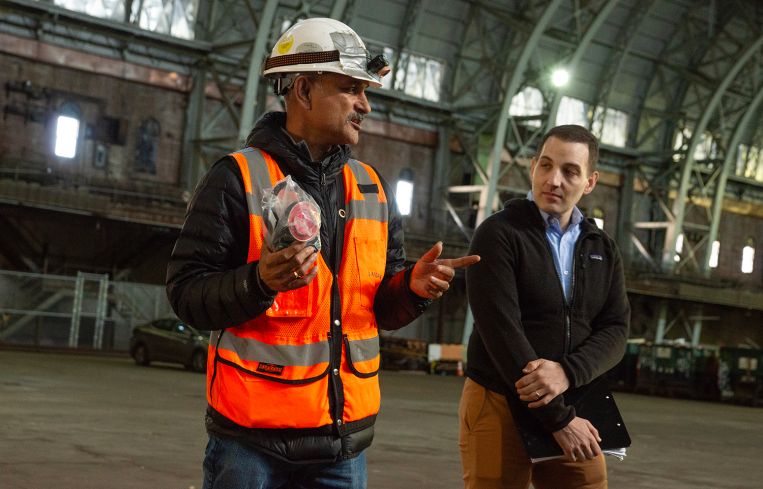
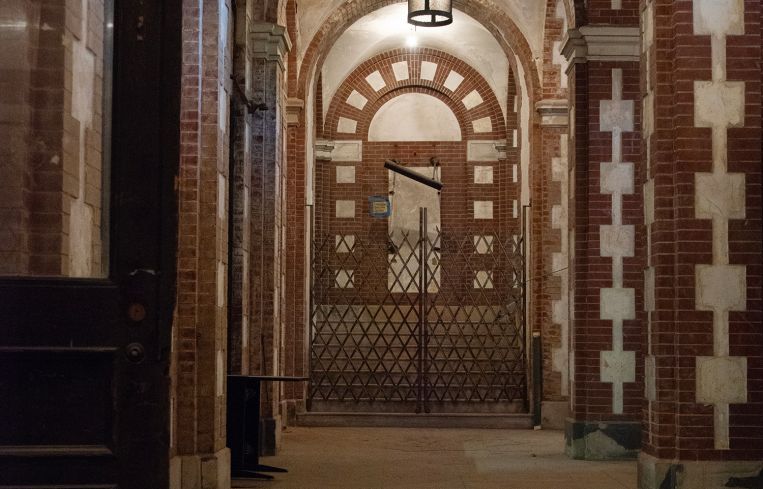





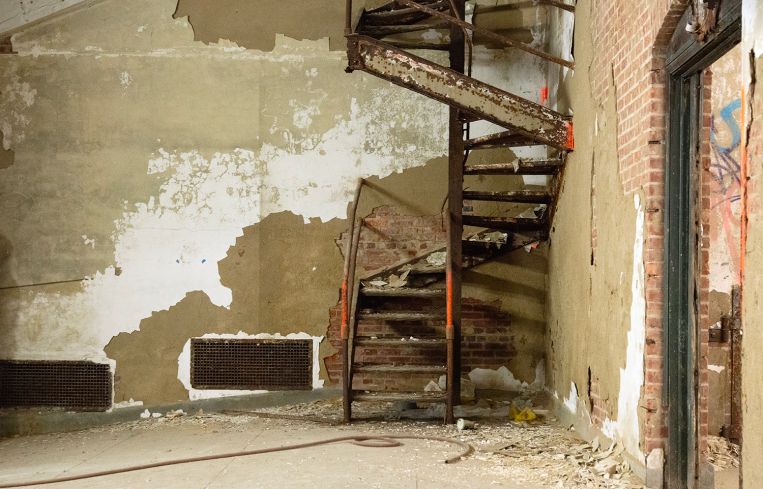
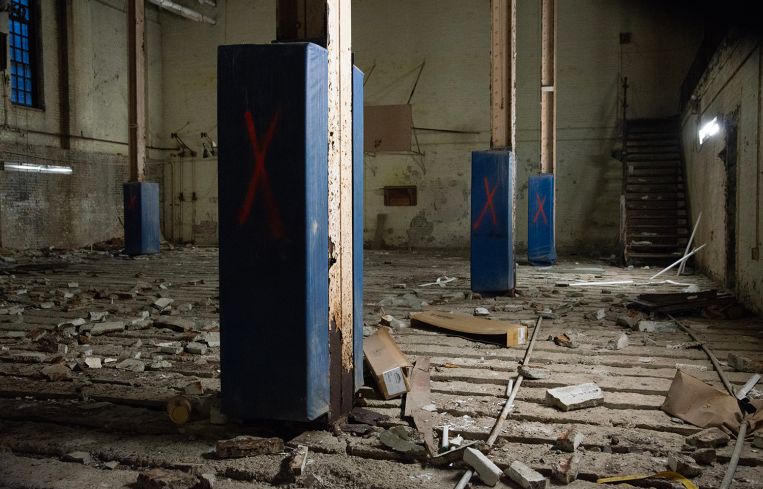
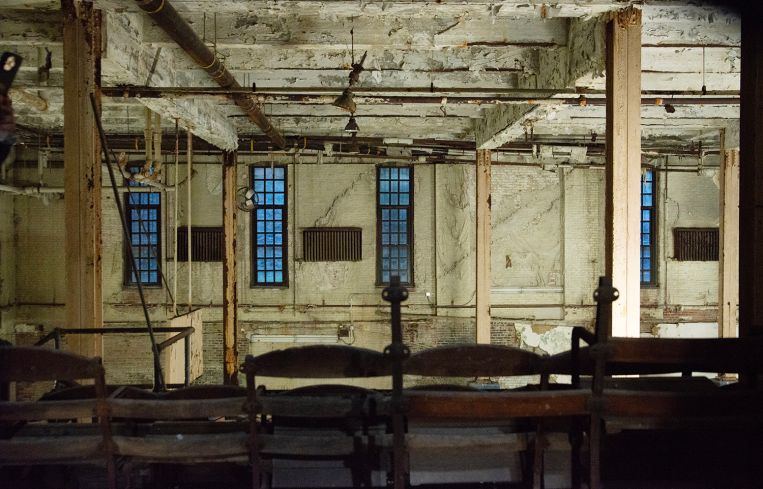

On weekday mornings, school buses line up on West 195th Street in the Bronx and children shuffle into class at P.S. 340. The bustling three-story schoolhouse is dwarfed by a formidable brick fortress sitting deathly quiet across the street: the Kingsbridge Armory.
The 570,000-square-foot armory has been vacant now for the better part of three decades — long enough for kids like these in the neighborhood to grow up and raise families of their own.
“I’ve been watching this armory battle play out for half my life,” said a man at a public visioning workshop held in Kingsbridge Heights over the past year.
The public engagement has now drawn to a close, and the New York City Economic Development Corporation (EDC) is once again soliciting proposals to redevelop the Kingsbridge Armory, the third attempt to do so in as many mayoral administrations.
Gov. Kathy Hochul and New York Mayor Eric Adams have committed $100 million each in state and city funds to the winning proposal. It must use unionized construction labor and provide space for a community organization at a reduced rate, among other requirements.
The state relinquished the 5.6-acre Kingsbridge Armory site back to the city in 1996, making it one of about 450 city-owned properties EDC manages as part of its mission to breathe new life into underutilized land and add private-sector jobs.
These projects received $225.6 million in discretionary assistance last fiscal year, a small slice of the $3.1 billion the city spent in total on economic development tax breaks during the same period.
EDC has tried and failed twice to break ground on the redevelopment of the Kingsbridge Armory — the largest armory in the country, and possibly the world.
Its parapets and stone trim call to mind the Château de Pierrefonds, the French medieval castle selected as the setting for Camelot in the BBC series “Merlin.”
Don’t be fooled. The soaring metal and glass roof 103 feet above the drill hall represents a feat not possible until the late 19th century, when advances in structural engineering gave rise to massive column-free spaces supported by trusses. The train sheds of the robber baron era are the immediate antecedent of the Kingsbridge Armory and about 120 others like it scattered across New York state.
This is a uniquely American genre of architecture, said Nancy Todd, author of “New York’s Historic Armories: An Illustrated History.” And, she added, “New York set the bar high.”
“They were community centers and clubhouses, but they were prepared to be called out to put down strikes,” Todd said. “They accomplished their main military goals and became a statement of American military power and community order. They instilled fear, these big, looming castles saying, ‘Don’t mess with the status quo.’”
Housed below the 180,000-square-foot drill hall are 12 company locker rooms spanning the length of a wide corridor, which leads on one end to a bowling alley, a billiard room and a boxing gym, and on the other to a 400-foot rifle range (the latter likely heavily contaminated with lead shot). At the center of the labyrinth is a theater and a lecture hall. An expansive mounting hall supported by a grid of columns placed every 20 feet throughout the room faces the north side of the property, with a ramp exiting toward West 195th Street.
Clouds of asbestos waft through the drafty air on the armory’s subterranean levels, and crystalline salt deposits creep across its walls, forming dusty white patches on the masonry.
Whatever future use the armory is put to, cleaning up the asbestos and lead will comprise the first several months of the project, Dmitry Khusidman estimated.
Khusidman is a project manager for Lozier Environmental Consulting and was one of eight people who donned respirators and suited up in Tyvek coveralls to tour the lower levels of the Kingsbridge Armory on Oct. 12. It felt a bit like exploring a deep sea shipwreck — desks with peeling paint and receipts scattered about the floor in perfect tableau.
For most of its existence, the Kingsbridge Armory was home to the 258th Field Artillery of the New York National Guard, formerly the Eighth Coast Defense Command, which paraded at President George Washington’s inauguration, earning it the nickname the “Washington Greys.”
Upon the armory’s completion in 1917, architect Lewis Pilcher remarked it was “perhaps the most interesting of all the armory designs in the country.”
At the turn of the century, National Guard armories were typically built downtown, where they were easy to access and could function as both clubhouses and civic centers, Todd said. But, in the interwar years, the Army National Guard “became the second fiddle to the centralized armed forces.”
Though built to last, their enormous, leaky roofs made armories expensive to maintain.
A flashpoint occurred in 1971, when the façade of the Madison Avenue Armory between 94th and 95th streets in Manhattan narrowly avoided demolition. It was spared when the city Landmarks Preservation Commission took emergency action to designate it a landmark.
The surviving section of the building became the first armory in the state to be added to the National Register of Historic Places the following year. Forty-one others across the state joined the register in the coming decades.
Today the Madison Avenue Armory is part of the Hunter College Elementary and High School campus, housed in a brick building designed to camouflage with the masonry of the adjacent historic structure.
Many of the state’s historic armories have taken their own winding path to adaptive reuse, ending in success stories and a few cautionary tales.
“By the 1960s and 1970s, armories were absolute white elephants,” said Todd. “The preservation movement recognized that these were amazing gems, and New York again was in the forefront of this groundbreaking movement to preserve historic architecture. It was critical to the fabric of our society.”
Sports and recreation operators dominate in the search for 21st century uses of historic armories.
At least four in New York state are now operated by the YMCA, including the 20,127-square-foot Corning Armory in Steuben County, which was converted in 1977. A local Armory Action Committee in Orleans County also settled on the YMCA as the new steward of the vacant Medina Armory in 1978. And the 43,133-square-foot West First Street Armory in Oswego met the same fate in 2004. More recently, the YMCA took over the operation of the 165,502-square-foot Park Slope Armory in Brooklyn in 2010 after a three-year renovation.
The Bedford-Union Armory in Crown Heights, Brooklyn, is perhaps the Kingsbridge Armory’s closest cousin. Both were designed by the same architecture firm only a few years apart.
“From a physical perspective, armory structures are pretty similar, one to the next, but they’re also literally designed for a program and for a military presence that doesn’t exist anymore,” said Don Capoccia, a principal at BFC Partners, which submitted the winning bid to transform the 112,971-square-foot Bedford-Union Armory into the Major R. Owens Health & Wellness Community Center almost a decade ago. The project includes 415 units of housing, 60 percent of which are designated for families earning between 30 and 60 percent of the area median income, with 35 units for formerly homeless households.
BFC’s proposal was selected by EDC in 2015 and quickly became embroiled in controversy, including a lawsuit by the Legal Aid Society claiming it would displace more people than it served in the surrounding neighborhood.
The City Council approved BFC’s plan nonetheless. The November 2017 vote ushered it past a milestone EDC has yet to reach with the much larger Kingsbridge Armory on the other side of the city.
Capoccia remembers walking into the historic Brooklyn structure for the first time. He was greeted by a row of mahogany gun lockers, he said.
“I mean, you walk into a place like this and you’re like, ‘What the hell am I gonna do with this building?’”
The basement shooting range was a conundrum, he said, because “how do you use a room that’s 400 feet long and 10 feet wide?”
BFC’s solution was to use it as an underground tunnel for a cogeneration plant — a mini power plant that uses a boiler’s thermal energy to produce both heat and electricity.
As for the underlying structural integrity of the building, “the trusses, the drill shed — that was really built to last a lot longer than 100 years,” Capoccia said.
He estimated BFC spent between $42 million and $45 million outfitting the building. The anticipated revenue from the housing project next door allowed BFC to funnel a crucial $7 million in equity into the debt-free project. New market tax credits plus a $4 million allocation from the City Council, $2 million from the de Blasio administration and a $15 million funding commitment from New York State also went a long way.
Everybody has to chip in, Capoccia said. In adaptive reuse circles, they borrow from the financing world to create a capital stack.
Since it was released in September, the request for proposals to redevelop the Kingsbridge Armory has been downloaded more than 500 times, according to the EDC.
That’s a lot of interest, said EDC president and CEO Andrew Kimball.
The Jan. 18, 2024, deadline for developers to submit proposals is fast approaching. EDC says it will select the winning proposal soon after the deadline and move full steam ahead to guide the project through the city’s public review process — a lengthy prospect culminating in a City Council vote and the mayor’s yay or nay.
“EDC’s methodology is simple,” Kimball told Commercial Observer. “It’s to listen first and listen thoroughly, and then translate that into an action plan that we think is realistic.”
Mayor Adams’s pick to head the city’s economic development engine is an old hand at rehabbing historic industrial sites. During the Bloomberg administration, he kick-started the city’s 300-acre green technology hub at the Brooklyn Navy Yard, leveraging $200 million in capital funding from the city to generate more than $500 million in private investment.
As Industry City’s chief executive from 2013 to 2022, Kimball oversaw the launch of the $1 billion megadevelopment of the former Bush Terminal in Sunset Park, Brooklyn. He was at the helm during the protracted zoning fight that followed, though he refused to let it be the hill he died on. Industry City withdrew its rezoning application in 2020, and the owners have since soldiered on in its wake.
“I’ve seen throughout my career — but particularly at the Brooklyn Navy Yard where you had buildings in the World War I era that had really seen no investment over a 75-year period, that had fallen into disrepair — that with a cross-subsidy from government [these sites] have really become symbols of rebirth,” Kimball said.
Plus, he added, reusing an old building is the most sustainable choice you can make.
Kimball wants to see the Kingsbridge Armory become an outward-facing facility, “a place where young people can be inspired about the jobs of the future,” he said.
He sees the $200 million public investment as a clear sign the mayor and governor want that, too.
“There’s very, very strong alignment around this,” Kimball said.
As of last fiscal year, EDC estimated its current projects have generated $36.9 billion in private investment and created 190,465 jobs — about 5 percent of the city’s private sector job market.
Nowhere is EDC’s mission more pressing than in the Bronx, where the unemployment rate is 7.3 percent — the highest of any county in the state.
“Failure to approve this redevelopment will leave this challenging site vacant for the foreseeable future,” Mayor Michael Bloomberg wrote prophetically in his veto message to the City Council in December 2009 after the council rejected Related Companies’ $300 million proposal to transform the Kingsbridge Armory into a shopping mall.
The project selected three years later — an indoor ice-skating center sponsored by hockey great Mark Messier — garnered the crucial support of labor unions and the Northwest Bronx Community and Clergy Coalition (NWBCCC), but ultimately died in court after failing to secure enough financial backing.
The NWBCCC has fought for decades for a development plan guaranteeing living-wage jobs and other community benefits at the armory.
“We have seen this play out across the country — that traditional economic development has limitations, and we saw EDC acknowledge that if the armory became a mall, it likely would have failed because of its traditional approach to short-term process versus long-term sustainability that brings revenue into the city over a long period of time,” said NWBCCC Director Sandra Lobo. “The visioning was core to ensure that the project is around for a very long time.”
Lobo said the vision document released in August was “incredibly promising.” She pointed to specific language around a project labor agreement, local hiring, and community ownership — a concept the organization has been actively pursuing through the launch of the Bronx Community Land Trust.
“From beginning to end, community ownership was a repeating theme in the visioning process,” Lobo said. “And that was largely missing from the RFP. If we compare the RFP to the CBA [community benefits agreement] in 2012, the RFP was a watered-down version of the components that are essential to the success of this project.”
A spokesman for Local 79 of the Construction & General Building Laborers union expressed cautious optimism after the release of the request for proposals. The union represents 10,000 construction workers in the New York City area.
“We fought hard to ensure the RFP reflected the community’s demands of local hire and high-paying union jobs,” union member Eddie Tarafa wrote in an email. “Together we achieved the commitment from the city to redevelop the armory under a project labor agreement. This is a huge win for our community.”
Abigail Nehring can be reached at anehring@commercialobserver.com.


